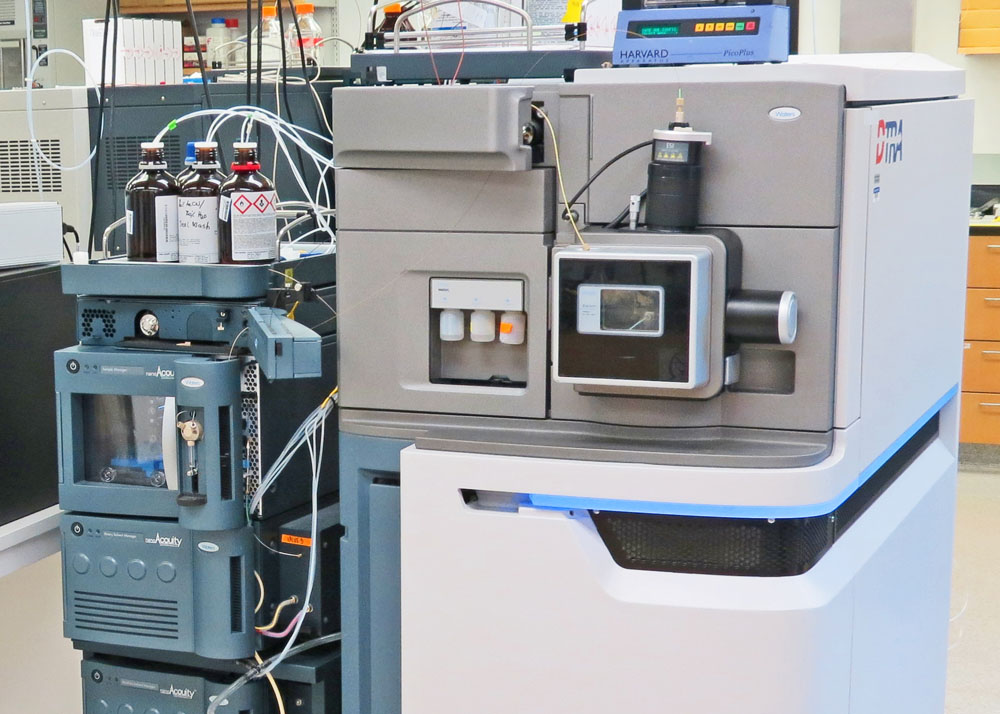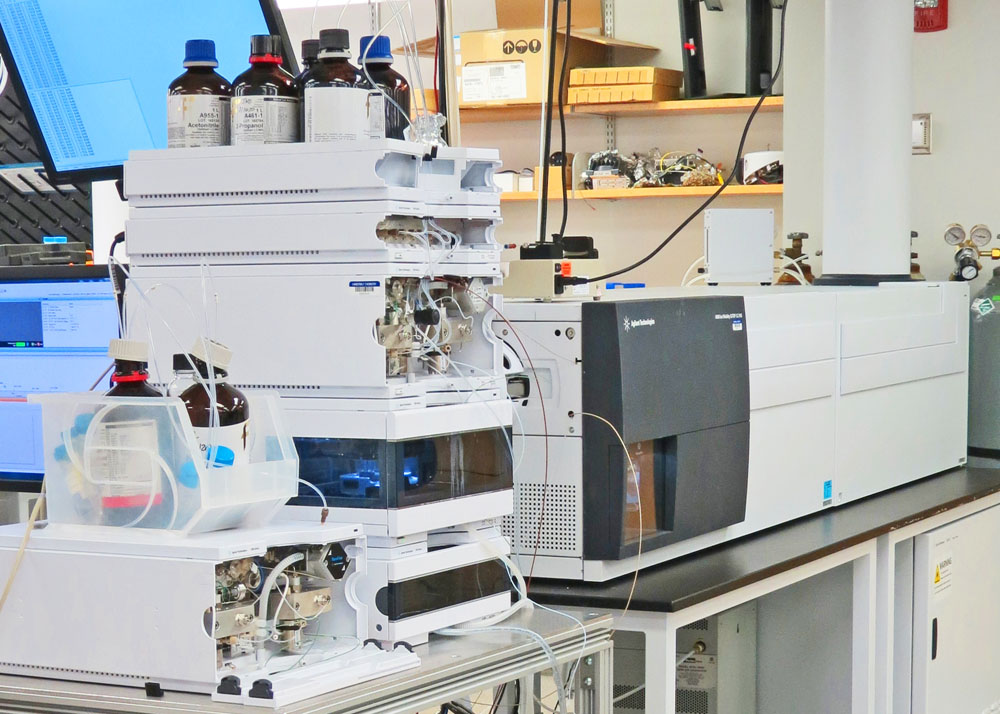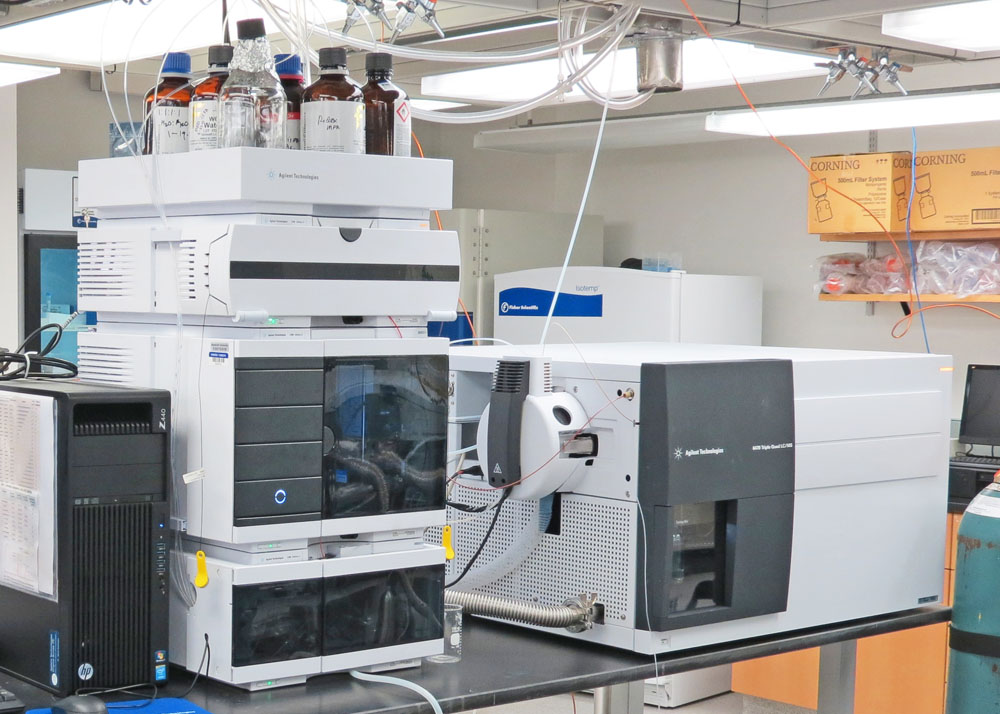The CIT houses state-of-the-art omics instrumentation and technology and our multi-vendor approach allows for highly customizable, flexible applications that can be tailored to our client’s specific needs.
Instrumentation includes:
- four LC-ion mobility mass spectrometers
- one high resolution LC-Orbitrap mass spectrometer
- one LC-QqQ (triple quadrupole) mass spectrometer
This omics instrumentation is supported by a variety of sample handling accessories including autosamplers, ultra high performance liquid chromatography (UHPLC), supercritical fluid chromatography (SFC), and a nanoflow ChipCube platform.
Importantly, the CIT (in conjunction with the McLean laboratory) is designated as a Waters Center of Innovation (Waters Corporation) and recognized as an Agilent Thought Leader laboratory (Agilent Technologies).
Liquid chromatography-mass spectrometry (LC-MS) tandem instruments offer the ability to separate compounds by both polarity (LC) and mass-to-charge (MS) ratio dimensions. A range of chromatography methods including reverse phase liquid chromatography (RPLC) and hydrophillic interaction liquid chromatography (HILIC) can be used to optimize stationary phase retention.
The CIT houses several commercially available liquid chromatography-ion mobility-mass spectrometry (LC-IM-MS) instruments. These instruments offer the ability to separate ions or metabolites in three dimensions: polarity (LC), molecular size/shape/charge (IM), and mass-to-charge (MS). All instruments are optimized for sensitivity to low molecular weight analytes (<2000 Da).
Both traveling wave ion mobility-mass spectrometry (IM-MS) instruments (Synapt G2 HDMS and Synapt G2-S HDMS models, Waters Corporation) are coupled to Acquity UPLC or nanoAcquity UPLC systems. The G2-S HDMS model incorporates StepWave ion transfer optics and TriWave IM technologies for increased sensitivity. Both, Synapt nano- and conventional electrospray ionization (ESI) utilize a lockspray, which allows for mass calibration during data acquisition. In addition, a quadrupole using a collision-induced dissociation (CID) cell both directly before and after the traveling wave mobility cell can perform mass selection and fragmentation.
The CIT also houses two state-of-the-art Agilent ion mobility instruments (Model 6560). These instruments were built with enhanced drift tube ion mobility resolution and precision. The 6560s are coupled to either a binary LC system (1260 Infinity, Agilent) or a nano flow LC (Chip Cube capabilities) that utilizes columns or prepackaged chips (Chip Cube) for enhanced reproducibility. The dual jet stream source is an electrospray ionization (ESI) source for increased sensitivity capabilities. For more specialized analyses, the static field ion mobility cell is capable of running in numerous gas conditions (i.e., nitrogen, helium and carbon dioxide) depending on the user’s needs.
Example Applications: lipidomics, chiral separations, structural characterization, biological and environmental analyses, xenobiotics, exposomics, environmental health (water testing)








 Follow Us
Follow Us